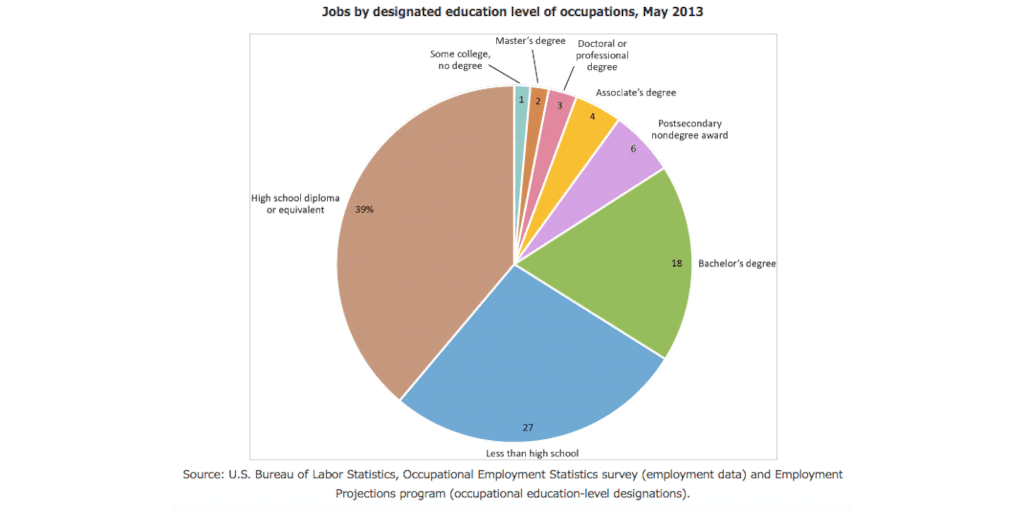
![]()
“Our human capital stock is ready to go back to work.” – Kevin Hassett
In May 2020, White House advisor Kevin Hassett drew public ire by referring to the American workforce as “human capital stock.” US Representative Alexandria Ocasio-Cortez asserted the term was not only outdated but inherently racist.
Human Capital Stock.
An ugly term w ugly history, but for many powerful ppl it‘s their most honest view of workers: human stock.
By their logic, the moment a person stops being useful to profit motive (retirement, health, etc) they are a liability. That’s the system we live in. https://t.co/ZihhtaI00W
— Alexandria Ocasio-Cortez (@AOC) May 26, 2020
This raised a very important question for employers: How do you measure the output of your employees without treating them like cattle?
In addition to questions about the potential for dehumanizing employees, contemporary theorists question whether or not human capital theory – a product of the mid-20th century manufacturing economy – still has a place in our 21st-century knowledge economy.
In a knowledge economy, an employee’s output is intellectual rather than physical. Human capital theory originated during what is considered a manufacturing economy. As a result, it’s optimized for measuring physical output.
At a clothespin factory, a worker’s productivity is judged by how many pins they produce a day. There’s an established length of time it should take to make a faultless pin. That pin is an example of physical output. At the end of the day, you can count that worker’s pins and have a fairly good idea of their productivity.
A knowledge worker, however, doesn’t produce physical output; a knowledge worker produces intellectual output. I’ll go into this in more detail further on, but – in terms of human capital theory – the question is: how do you know how many “pins” a knowledge worker makes per day?
Obviously, knowledge workers are still given a wage, generally factored according to their value to the company (experience, education, etc.); in other words, using the principles of human capital theory.
But is this an accurate reflection of that employee’s worth? Are knowledge workers being undervalued because their productivity isn’t linked to the number of hours they work? Should intellectual and physical output still be measured on the same scale? Can they be weighed by the same scale?
More to the point, if human capital theory has outlived its usefulness, what language should we be using to describe an employee’s value? Is it fair to consider employees part of a company’s assets?
In this Process Street post, I aim to investigate these questions and explore ways in which the 21st-century employer can assess employees in terms of company value without objectifying the individual contributions.
- “Our people are our greatest asset.”
- The problem of a knowledge-based economy
- 6 factors to improve knowledge worker productivity
“Our people are our greatest assets.”
“[Human resources sounds] like what a malevolent AI would come up with if they [wanted] to sound like they value the people and don’t simply consider them food to be consumed at the end of the machine.” – Jay Hanlon, VP of People & Operations, Process Street
If “human resources” sounds like it came from a malevolent AI, “human capital” takes it three steps further.
Consider the following statements:
- Our people are our greatest assets.
- We invest in our employees.
- We’re a family here.
We’ve all come across some variation of this. Most of us have probably even said it at one point or another. It sounds good, right?
Business, particularly the financial side, gets painted with a tarnished glaze. We cultivate ideas of the CEO-as-sociopath. The heartless executive exploiting vulnerable employees. The greedy, greedy capitalist willing to go to any lengths to turn a profit.

Statements about the value of employees – if phrased correctly, of course – do some heavy lifting in regards to deflecting those negative perceptions. And let’s be clear, that’s exactly what they are: deflections.
These statements are carefully and strategically worded in order to hit certain touchstones and evoke a particular feeling. Certainly, they sound a lot more positive than the term “human capital.”
When it comes right down to it, though, they mean exactly the same thing: a company’s employees are a commodity that contributes to (or diminishes) the overall ROI of an organization.
Calculating the specific ROI of employees, however, is mired in difficulties with zero solutions. Yet, there does need to be a way for employers to quantify these qualitative “assets” (knowledge, skills, experience, etc.) to determine the employee’s value. How else can those employers decide where to invest further and where to cut their losses?
Fun with D and J

Scenario: There’s a training opportunity coming up, but only one person from the team can attend. Who gets to go?
D has been with the company for ten years, has progressed from entry-level to mid-range, and has worked in several different departments – and mastered their specific skills – over the past decade. However, D only has an associate degree in an industry-specific subject and has not received any official skill certifications.
J has only been with the company for two years, but has a master’s degree in a semi-related subject, as well as a few skill certificates. While still relatively new to the industry, J’s managers are impressed with their qualifications and work ethic, and have been encouraging J to take on additional responsibilities.
According to human capital theory, J’s education means they’ll be more productive (in terms of capital), thus a better investment and able to earn a higher income.
Not all employers would make this decision, of course. Their line manager might decide that D’s life experience, company loyalty, and on-the-job development are equally or more valuable than J’s degree.
Already, in that basic scenario, the value of each “asset” isn’t clear; it’s highly subjective. While one manager may value J’s formal education, another may value D’s experience. So let’s add a few more complications into the mix:
1. D and J both have the same degree but from two different universities. D did quite well academically at an Ivy League university while J graduated summa cum laude from a local community college.
2. Both have the same qualifications and have worked in design engineering (95.9% predominantly male) for the same length of time. D is female and J is male. Despite having higher performance reviews, D has been passed over for promotion twice and currently earns $10,000 per year less than J did in the same role.
3. Both are men, but D is white and J is Black. They have the same skills, education, and experience. Five years ago, they were both laid off from the same company. After a few months, D is hired on at a similar company with the same salary and benefits. After over a year of being passed over for jobs in his field, J has to accept a greatly reduced salary for a position in a related field that he’s overqualified for.

4. The economy experiences a recession. Both D and J are made redundant. Despite their qualifications and experience, firms in their field aren’t hiring. Both end up pursuing low-skilled, low-paid jobs but struggle to find employment due to overqualification. In the current economic state, due to their qualitative assets, both D and J are unemployable.
By drawing a direct correlation between an individual’s education, training, and knowledge, human capital theory fails to take into consideration other factors (gender, gender presentation, age, race/ethnicity, sexuality, disability, religion) that influence and create the income and wage disparities in modern society. It also doesn’t acknowledge inequities in available education and training opportunities.
Human capital theory: The problem of a knowledge-based economy
Ascribing quantitative measurements to qualitative characteristics was always going to encounter problems. In the manufacturing-based economy of the mid-20th century, this ambiguity was somewhat less easy to spot (and, based on their research, I seriously doubt many had the awareness to even look for it).
It’s quite simple to measure the productivity of a farmer by how many melons are grown from season to season, how large those melons are, etc. Melons have quantifiable measurements.
Likewise, if Lucy has to wrap X number of candies during her shift, but only manages to wrap half of that, we can easily assess her productivity as below average.
Erm. Maybe well below average in this case.
There were still mitigating factors, of course. Had Lucy ever wrapped candies before? Was there a quality issue with the wrappers, such as tearing easily, sticking together, etc.? Did the assembly line function properly? While a manager evaluating her performance should definitely take all of that into account, her actual productivity is measurable.
Quantifying qualitative skills
If we try to measure a knowledge-based career by the same metrics, it quickly becomes untenable.
How do you rate a teacher’s productivity, for example?
Obviously, this is done via different standards and metrics, and those results are contested every step of the way, for very valid reasons. Should a teacher’s productivity be tied to test scores?
Yes, the teacher can have an impact on those scores, but the students’ abilities also come into play. If a student is falling behind due to a factor not influenced by the teacher (personal illness or tragedy, difficulty at home, learning disability, lack of interest/motivation, etc.), is it the teacher that’s unproductive, or is it the student?
Some schools combine test scores with student evaluations, which can provide a clearer picture, but while the teacher’s performance is scored in a quantitative way (usually on a 1-5 scale), the metrics being measured are highly qualitative and subjective.
Or consider the humble content writer, because I do so love using myself as an example.

There’s a variety of things we do here at Process Street, but to keep it simple, let’s say we each have to write one post a week – that’s four per sprint.
Each writer’s productivity should be easy to determine, right? It’s just the candy factory, but with writing instead of candy wrapping.
Well, sort of.
- How long is each post?
- How much research does each require?
- How accessible is that research?
- Could someone else’s bottleneck affect the writer?
- What is the quality of each post?
- How do you judge the quality of completely different posts?
It’s not impossible, but it is tricky to come to a solid conclusion. In the end, any metric used to judge our writing production will be subjective. Before publication, my posts are all read by multiple people. Sometimes (read: never) they all agree. Other times (read: always) they don’t.
One editor really likes the intro. The other thinks it needs reworking. One colleague doesn’t get a joke. The other thinks it’s hilarious. Once it’s posted, three people think it’s brilliant. Three people think I’m an idiot. One person is totally confused.
What then is my total productive output, and how do you compare that to my colleagues’ total productivity?
Knowledge doesn’t mean what you think it does

So, if human capital is all about an individual’s education and training, and we’re currently in a knowledge-based economy, what’s the problem? Education and training = knowledge, right?
Yes. And no.
Over time, the definition of human capital has expanded to include a wide variety of characteristics from basic skills to emotional intelligence to fame and geographical location. As such, it’s become an increasingly popular term for economists.
That said, the theory of human capital is still very much grounded in education, training, and healthcare. Fortunately – at least for those reading this and/or affected by concepts of human capital – most salaries come with health insurance ( yay!).
This is actually probably an improvement from the manufacturing economy. That’s a win for human capital theory: knowledge workers generally have access to mostly affordable healthcare. Sometimes.
In terms of education and training, though, a knowledge-based economy does not follow through on the hypothesis of human capital theory.
Refresher time: Human capital theory is the measure of skills, education, and abilities of an individual that enable them to produce economic value through labor.
A knowledge economy basically has two types of knowledge:
- Explicit knowledge: Data, facts, figures, etc.
- Tacit knowledge: Experience, judgment, intuition, people skills, etc.

Educational qualifications are about explicit knowledge. We go to school, memorize things, and they give us a degree. We also pick up a fair amount of tacit, or experience-based, knowledge in the process. However, tacit knowledge can be more situational and subjective so a tactic that works in one area or organization may not transfer to another organization.
For example, I came to Process Street with a degree in writing, plus a decent chunk of experience. But that experience was in academic writing, not web-based content writing.
My explicit knowledge – in this case, things like spelling, grammar, etc. – was transferable.
My tacit knowledge – style, structure, language, and so on – was not.
In other words, I knew the general textbook elements of writing, but had to learn the specific how-it’s-done techniques of content writing.
The key here, though, is that a large part of the knowledge in a knowledge-based economy doesn’t come from traditional education. A knowledge-based economy is a learning-by-doing model. This is where we get concepts like “fail fast, learn fast,” “intelligent failure,” “move fast and break things,” or even “failing upward” (which has its own problematic nature).
Before Process Street, I had never worked in marketing. I never even dreamed I would work in marketing. It seemed like this crazy, alien world I had absolutely nothing to do with. I don’t even have a business degree. I have an English degree. Not even one of the proper research-based English degrees. No. I have a degree in creative writing. I write experimental fiction about monsters.
Things happen, though, and I found myself in a Zoom interview with my (now) editor. “Don’t worry about marketing experience,” he said. “The important thing is you can write. We’ll teach you everything else.”
And they did. Sure, “wacky” recruiting tactics and cultivating diverse teams are part and parcel of start-up strategy. This trend is also indicative of how a knowledge economy works: There is a limited capacity for highly-skilled (read: highly educated) jobs.

Looking at this chart from the US Bureau of Labor Statistics, you can see that only 18% of all jobs in the US in 2013 typically required a bachelor’s degree. Only 2% required a master’s. Over half of jobs in the entire country didn’t require a university degree at all, and yet 40-50% of young people were attending college.
If you fast forward to 2020: 40% of recent graduates and 33% of college graduates are underemployed.
The upside is that, because of less focus on traditional qualifications, there are more opportunities for knowledge workers. The downside is that there are far fewer permanent and/or well-paid opportunities for those with physical labor or manufacturing skills. This has contributed to an increased pay gap between those with highly specialized skills and those with low specialized skills. As a result, we’ve seen a rise in the temporary, low-paid “gig economy.”
6 factors to improve knowledge worker productivity
Leks, you say, I know it’s not nice to call them capital, but they are capital, and I need to know what they’re worth.
I know. It’s a quandary. A knowledge worker’s function is to create intellectual output. Basically, their job is to use knowledge to solve problems. Intellectual output, however, doesn’t come in batches. It can’t be weighed on a scale, counted in numbers, or packaged neatly for sale. How do you, in that case, evaluate the overall value of an employee’s intellectual output?
Basically, you can’t. Intellectual output doesn’t work like a factory’s assembly line. Each task a knowledge worker performs requires a different application of knowledge and skills. Therefore, to measure the productivity of your knowledge workers, you need to change the way you think. Instead of trying to quantify an intangible product, you need to assess a qualitative experience.
Advanced Workplace Associates and the Center for Evidence Based Management partnered together to conduct extensive research into how to evaluate knowledge worker productivity. They discovered that there is no single, universal indicator that can be measured; knowledge-based work is just too varied.
They did, however, discover six factors that have the strongest association with knowledge worker productivity. They may not give you a comforting spreadsheet of formulas and equations, but these are the six things you can look for to determine if your team of thinkers is producing investment-worthy thoughts.
These are the 6 factors of knowledge worker productivity.
Productivity factor #1: Social cohesion
It’s basic human: people are happier when they get along. As it turns out, they’re more productive, too.

In a knowledge economy, the value of the individual is that person’s knowledge. If the team or organization doesn’t have access to that knowledge, that asset is lost. Sure, Sara might be sitting in the meeting like always, but as a resource for the team, she might as well be anywhere else.
Social cohesion isn’t just about having a group of colleagues who work well together as a team. This cohesion needs to be fluid up and down the organizational hierarchy so that individuals feel comfortable sharing ideas, challenging ideas, and being challenged without hostility or retribution.
The knowledge “asset” is the sum total of an individual’s experiences, skills, abilities, and relationships used to create new knowledge that will eventually lead to new products/services that will become commercial value. But if that asset doesn’t feel safe speaking up or challenging an idea – even to the CEO – you aren’t making the best use of your resources, and you definitely won’t get the ROI you want.
Productivity factor #2: Supervisory support
The report actually phrases this as “perceived supervisory support,” but I’m going to ditch that “perceived” bit for two reasons:
- You can’t fake support your team; it’s all or nothing.
- If your team doesn’t know they have your support, you’re not supporting them.
The role of supervisor is a complex one. You have to take care of a whole slew of practical and pragmatic functions, but you also need to have a healthy repertoire of soft skills for team management.
Whether you have to give negative feedback to a team member or everyone is celebrating a team victory, your workers need to know you support them. You need to be proactive in cultivating those relationships, clear in communicating processes and expectations, and consistent in your coaching and encouragement.

According to Achievers 2020 Engagement and Retention Report, while 90% of workers said they were more likely to stay at a company that takes and acts on feedback, only 42% of workers felt their company made a strong effort to solicit feedback. In terms of responding to feedback, 44% felt lukewarm about management’s response to feedback while 23% said it was horrible.
The report largely focused on employee engagement (or, as it turns out, the lack of), but 64% of those who said they felt disengaged from work also stated they were ready to leave as a result. Feeling undervalued by management was the #2 reason for a lack of engagement (behind “lack of career growth”).
Productivity factor #3: Information sharing
At Process Street, we practice Working Out Loud. I know. It sounds corny. It’s one of those catchy business buzzwords that’s meant to motivate and inspire.
In a larger context, this concept represents transparency. Leadership keeps us in the loop about what’s happening on the macro-level. We report on what we’re each doing on the micro-level. Everyone knows what’s happening.
The day-to-day version? Sharing. That’s it. That’s the whole idea. The content team has its own Slack channel where we all pool our knowledge assets in order to accomplish our tasks. Because we all come from diverse backgrounds and experiences, you can never be entirely sure who has that weird factoid you need for a post, or an in-depth understanding of early arcade culture.
We also share processes. Being that Process Street is all about checklists, it’s incredibly easy for us to document those processes, share them with each other, offer feedback and improvements, reiterate and repeat.
It saves time. It reinforces those warm, fuzzy feelings we have about our colleagues. And it keeps our processes optimized. It’s all about the teamwork.
Productivity factor #4: Vision clarity
Stop right now and ask yourself: Do your people know why they’re doing what they’re doing?
No, really. Do they?
Anyone who’s ever supervised another person (of any age) has been asked the question: why do we do that?
I ask my editor that question at least once a week. He continues to patiently explain the reason behind whatever’s got my attention that week, or sometimes he says, “Y’know what? I don’t know. That’s a good question.”
To be engaged with their responsibilities, people need to know there’s a purpose behind them. With remote work, in particular, even the most cohesive team can sometimes start to feel like they’re living in their own separate silo.
As management, you need to be able to relate company OKRs to what individual teams are working on. Make sure individuals know what their contributions are to the whole, and that those contributions are valued. If they don’t feel like the vision is worth it, they’ll be less likely to commit their energy and creativity to the project.
Productivity factor #5: External communication

So I mentioned silos a minute ago, right? An individual employee can become siloed; so can a team, or a department – but so can a company.
It’s great to have a strong company culture with open communication happening all the time between every department and every level of the organization. You need to be careful that you aren’t only communicating internally, though.
What are your competitors doing? What’s happening in the industry? What new ideas are out there? You need outside input or you’re going to stagnate, and all your brilliant knowledge assets will vanish.
Smart people are like puppies: they have all this energy, are super curious, and want to know everything. When you get a new puppy, you have to put a lot of effort into keeping it entertained and engaged. If you don’t, the puppy gets bored, and eats your favorite sneakers.
They may not eat your shoes, but if your people get bored, they will find somewhere that challenges them.
Productivity factor #6: Trust
I really shouldn’t have to explain this one but…
Your employees need to trust you. They need to trust their colleagues. And they need to trust the company.
When trust breaks down, cohesion breaks down, then all the sharing, clarity, communication, and, ultimately, your company’s productivity.
Part of it comes from that transparency I mentioned earlier. If employees are confident in what the company stands for and can see actions that back that up, they’ll value their position more. If they know their colleagues and team members have credible, reliable information, they’ll be more likely to use it, and place value on those connections. A bad experience can have just as much impact.
For example, if I were to collaborate with another writer, and that writer decided to claim my work as their own, that would be a breach of trust. Not only would I not be very happy with the writer, but I’d also be warier of future collaborations.
This is another thing you can’t fake.
“One of the most critical skills for a manager is the ability to care about your people, and make sure they know it. You have to mean it, because people can smell it if you’re full of it. You need to be able to communicate to your team that you care about them, and that they’re valuable to you, both as employees and as human beings.” – Jay Hanlon, VP of People & Operations

Is it time to rebrand human capital?
Not gonna lie, this is not the post I expected or intended to write. When I first suggested this topic, I had in mind some hugely ambitious critique of the dehumanization of the workforce by capital elitists, maybe even a takedown of capitalism itself…
I did say it was hugely ambitious.
Perhaps, all things being equal, the premise of human capital theory that education will determine earning potential might be accurate. All things, however, are not equal at all.
I do think there is something intrinsically dangerous about thinking of your employees as “human capital,” and definitely if you start calling them “human capital stock.”
Much like organizations have begun the rebranding from “human resources” to “people management,” it may be that what human capital theory really needs is a little rebranding and more thought put into properly measuring productivity in terms of intellectual output rather than simply physical results.
How do you feel about human capital theory? Do you sometimes feel like a malevolent AI? Share your thoughts in the comments!







Leks Drakos
Leks Drakos, Ph.D. is a rogue academic with a PhD from the University of Kent (Paris and Canterbury). Research interests include HR, DEIA, contemporary culture, post-apocalyptica, and monster studies. Twitter: @leksikality [he/him]